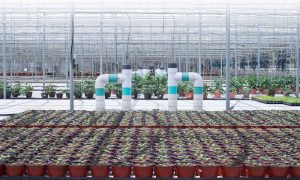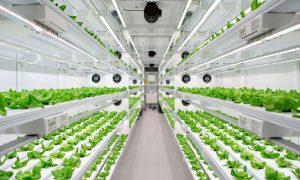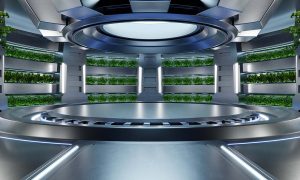Tomato is an annual plant from the Solonaceae family.
It can be grown in greenhouses, hydroponics and in the field.
Numerous varieties of the tomato plant are widely grown in temperate climates across the world, with greenhouses allowing for the production of tomatoes throughout all seasons of the year. Tomato plants typically grow to 1–3 meters (3–10 ft) in height. They are vines that have a weak stem that sprawls and typically needs support. Indeterminate tomato plants are perennials in their native habitat, but are cultivated as annuals. Determinate, or bush, plants are annuals that stop growing at a certain height and produce a crop all at once. The size of the tomato varies according to the cultivar, with a range of 1–10 cm (1⁄2–4 in) in width.
To make sure that tomatoes receive the proper nutrient, levels growers should take several considerations:
Analysis of irrigation water and nutrient solution
Irrigation water analysis is a first step towards a good fertilization plan.No matter if the water source is a well, dam or municipal system, there are specific parameters to pay attention to.The most important analysis includes water pH, electrical conductivity (EC), water hardness (CaCO3), salinity (sodium Na+, Chloride Cl).
Conductivity of irrigation water (without nutrients) should be below 0.5mS/cm, while pH should be corrected to levels between 5-6.
If you are experiencing high conductivity, water hardness and salinity, water treatment system should be installed prior to fertlization line.
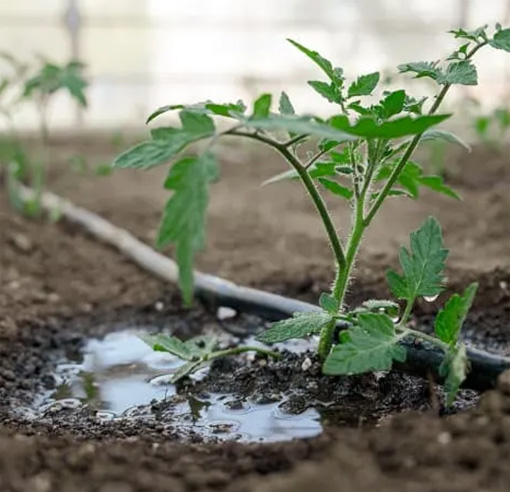
BUT, this is not an endgame, you should keep your nutrient solution under control.
Once or twice per month, the nutrient solution should be tested.
Why? And How? And Where?
Method: 1-2-3 Compare
EC 3 (drain) > EC 2 (feed)
Much bigger value of EC in drain samples gives information that plants are not receiving enough water
EC 3 (drain) < EC 2 (feed)
Much lower value of EC taken in the drain sample gives information that plants are receiving too much water.
Next step: Adjust the number of cycles accordingly
How to test?
Testing the pH, conductivity and temperature are giving the promising results in terms of yield and quality indicators. Monitoring phosphates, nitrates, calcium, and potassium are all primary components to plant growth. Other minor nutrients are needed as well.
Tomato tolerance depends and can vary a lot between the varieties.
If irrigation water has a high salt content it can accumulate in fields, increasing the salinity and electrical conductivity.
HI9814
pH/EC/TDS/Temp meter
HI9814 is a durable, portable pH, conductivity, total dissolved solids and temperature meter for most measurements encountered in hydroponics, aquaponics or general agriculture applications. All operations and settings, are made through only two buttons and the housing is waterproof and rated for IP67 conditions. User-selectable features include selectable TDS factors of 0.5 and 0.7 as well as auto-off after 8 minutes or 60 minutes to prolong battery life.
Nutrient analysis
The addition of fertilizer is a good way to encourage crops to reach optimal growth. It is possible to have too much of a good thing, though. Fertilizers introduce nutrients and salts into the growing medium. These ions will attribute to a higher electrical conductivity. It’s important to be mindful of the electrical conductivity of your growing medium. Add too much fertilizer and you can increase the salinity and EC past safe limits.
Nutrients level should be adjusted according to tomato variety, developmental growth stage, temperature and light level.
Hanna Instruments offer a photometer for the analysis of nutrients, with which customers can obtain the required data in one day, targeting a number of different measurements with high accuracy and speed.
HI83325-02
Nutrient Analysis Photometer
HI83325 is a compact, multiparameter photometer for use in the environmental lab or in the field. The meter is one of the most advanced photometers available with a innovative optical design that utilizes a reference detector and focusing lens to eliminate errors from changes in the light source and imperfections in the glass cuvette.
This meter has 9 different programmed methods measuring 8 key plant nutrient water quality parameters:
- Ammonia
- Nitrate
- Phosphate
- Potassium
- Sulfate
- Calcium
- Iron
- Magnesium
To save valuable laboratory benchtop space, the HI83325 doubles as a professional pH meter with its digital pH/temperature electrode input. Now one meter can be used for both photometric and pH measurements.
Light is important
HI97500
Portable Lux Meter
Tomatoes need a lot of light for growth and development.
Quality of light is very important in agriculture.Too little light (or luminous intensity) affects the quantity and quality of crop performance.
While lack of sufficient light results in poor plant growth, too much light can also be harmful. Shade plants cannot tolerate excessively high light levels. When a plant receives too much direct light, the leaves bleach or scald, sometimes dying. This often happens after moving a plant outdoors in direct light. Any changes in light intensity should be gradual.
HI97500 is a portable lux meter designed for simplicity of use in taking rapid light measurements.
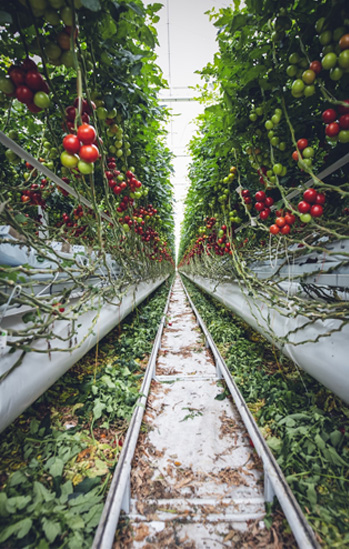
Irrigation automatisation & control
In tomato production it is essential to establish the frequency of watering so that the plant does not undergo root suffocation and through water stress. If the ratios of applied irrigation cycles vs. nutrients cycles are not carried correctly, huge losses in yield could occur.
With proper irrigation the quality and quantity of tomatoes can be significantly enhanced.
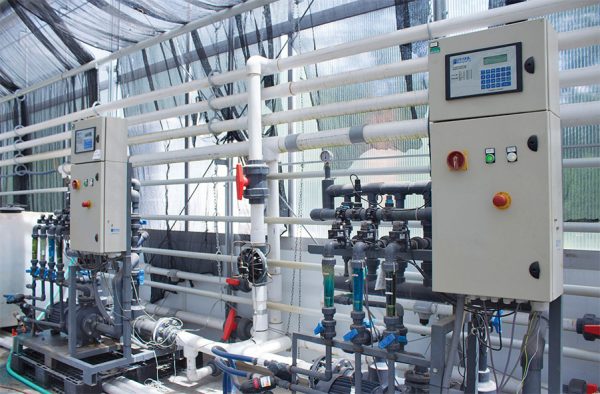
Correct irrigation is not a simple process: the quantity of water must be sufficient for tomato plants, and if not, photosynthesis and overall growth is impeded. However, if the amount of water is more than required, plant growth may become excessive, producing a tall, softer and/or damaged product.
We design and manufacture a complete, ready-to-install, ferti-irrigation system for our customers.
At first, we collect the information and requests of the agronomist to create a system that corresponds to the actual needs of the customer. Afterward, we analyze the existing infrastructures to be able to interface our systems with the fixture already installed.
Finally, we produce the customized system and proceed with the installation, commissioning, and training of the personnel in charge.
- Outdoor farming
- Indoor (soil) farming
- Hydroponics
- Aeroponic
- Direct injection of nutrients
- Mixing tank
The Fertigation controller performs all necessary operations, monitoring, control of irrigation, and fertilization processes. These operations are conducted continuously throughout the day, month and year.
To use and manage the system properly, all the necessary control values must be set (setup mode). During monitoring operations (consulting mode) the user can obtain information about how the system and irrigation process are functioning. Furthermore, the history of all operations for the current and previous days can be accessed.
Successful Grower Tips:
· Keep a log of your data
· Keep results on drippers in line with irrigation system controller values
· Calibrate portable pH & EC meters weekly
· Calibrate pH & EC sensors on the fertigation unit monthly
· Keep electrodes, fertigation system and fertilizer tanks clean to avoid deposits
Nives Vinceković Budor, mag.ing.chem.ing.

